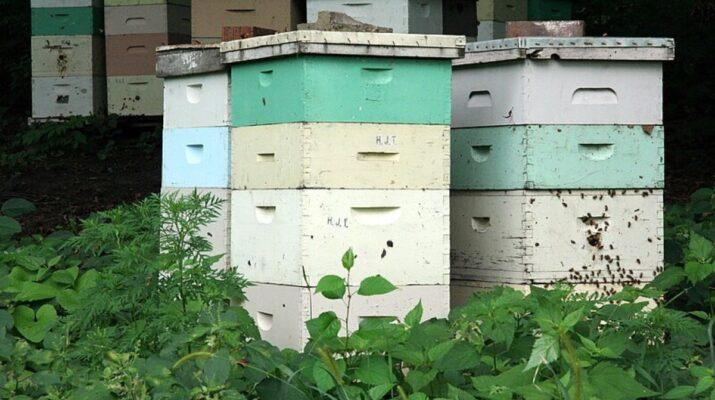Waikato District Council has made a few changes to the Keeping of Animals Bylaw, after hearing public feedback. Within Raglan urban on properties under 500m2, beehives are not allowed unless you have prior written approval from Council.
The Keeping of Animals Bylaw includes rules to reduce or prevent animal nuisance and specifies areas where certain animals can be kept, such as bees, pigs, chickens, and roosters.
This Bylaw does not apply to dogs. Rules for dogs are included in Council’s Dog Control Bylaw and Dog Control Policy.
What you need to know
Our urban, lifestyle and rural areas
The bylaw has different rules for our urban, lifestyle and rural areas.
What has changed from the previous bylaw?
- Council is now using zones from the most recent version of our district plan, to define our urban, lifestyle and rural areas. To find out what zone your property is in, refer to Schedule 1 in the Bylaw.
- Huntly includes properties within the centre of town zoned as General Rural, however, these are relatively small (under 1500m2) and are close to urban properties. As a result, Council has classified these properties in the bylaw as urban. See Map 1 and 2 in the bylaw to see if this applies to you.
Bees
- Rural area:
There is no maximum number of hives for properties within a rural area.
If there is no solid barrier (such as a wall, dense hedge or fencing) of 1.8m, the hives much be placed at least 5m from the boundary. - Lifestyle area:
Hives cannot be closer than 5m to property boundary/residential dwelling.
Except with prior written approval, the number of hives in urban and lifestyle areas are:
500-2000m2: 2 hives
2001-4000m2: 4 hives
4001+ m2: 6 hives. - Properties under 500m2:
Beehives are not allowed unless you have prior written approval from Council.
What has changed from the previous bylaw?
- Allowing dense hedging and walls as a suitable barrier to direct the flight path of bees, in addition to fencing (Clause 8.3(a)(i)(ii)). This is because dense hedging and walls can also direct the flight path of bees, minimising nuisance caused by bees.
- Removing the rule requiring beehives to be set back from property boundaries, if there are suitable barriers in place which will direct the flight path of bees. This will minimise the nuisance caused as the bees will be directed to fly higher than a fence or wall.
- Allowing Council to provide written approval for a person to keep bees on properties smaller than 500m², to allow beehives to be kept on smaller properties when appropriate.
- Reduced how far a beehive must be from a property boundary in lifestyle and rural areas, to allow for more choice around how land is utilised.
Poultry
- Urban area – properties under 550m2: Allowed 6 poultry.
- Urban area – properties bigger than 550m2: Allowed 12 poultry.
- Poultry in urban areas must have enclosed housing that meets certain criteria, including being rainproof.
- Poultry houses must be further than 3m from the boundary.
- No roosters are allowed in urban or lifestyle zones.
What has changed from the previous bylaw?
- Removed the rule requiring poultry houses to be 10m from any dwelling, factory, or building, as this rule was considered overly restrictive and other rules are in place to manage nuisance.
Pigs
- Pigs are not allowed in urban areas.
- A pig run or pigsty cannot be closer than 20m to a dwelling or building.
- Pigs cannot be kept in a manner that will create a nuisance or affect the health of any person.
What has changed from the previous bylaw?
- No changes.
Horses
- Horses are not allowed to be kept on less than 1200m2 in an urban area.
- Horse droppings must be picked up and removed from public places.
What has changed from the previous bylaw?
- No changes.
Cats
- If an animal causing a nuisance is identfied as feral or stray, the property owner must take appropriate measures.
What has changed from previous bylaw.
- Council decided to include a new advisory note encouraging cat owners to de-sex their cats by four months of age, microchip, and register their cats on the New Zealand Companion Animal Register. Council also clarified that cats are not required to be confined to the boundaries of a property.
Background information
The Keeping of Animals Bylaw was adopted by Council on 2 December 2024. It aims to strike a balance between managing nuisance but also recognising the important role that animals play for people in our district.
Prior to consulting, Council staff reviewed data over a five-year period to see the frequency and type of animal complaints received. During this period Council received 363 complaints relating to animals (excluding dogs). Roosters had the highest number of complaints, followed by chickens and the most common complaint for all animals was about noise.
Earlier this year Council asked for feedback through an online survey. Of the 306 responses received, a third had experienced animal-related nuisance with people expressing concern about roaming or noisy animals, and instances of property damage.
Council consulted on the proposed Keeping of Animals Bylaw between 26 June and 29 July, and received 63 submissions. Four submitters spoke at a Council hearing on 7 October. After the hearing, the Council committee decided that more work was required on the zone definitions to make it easier for people to understand the rules that applied to their property.
The bylaw can be found on our Bylaws page – www.waikatodistrict.govt.nz/bylaws – or viewed here.
More information about keeping animals in our district can be found here.

